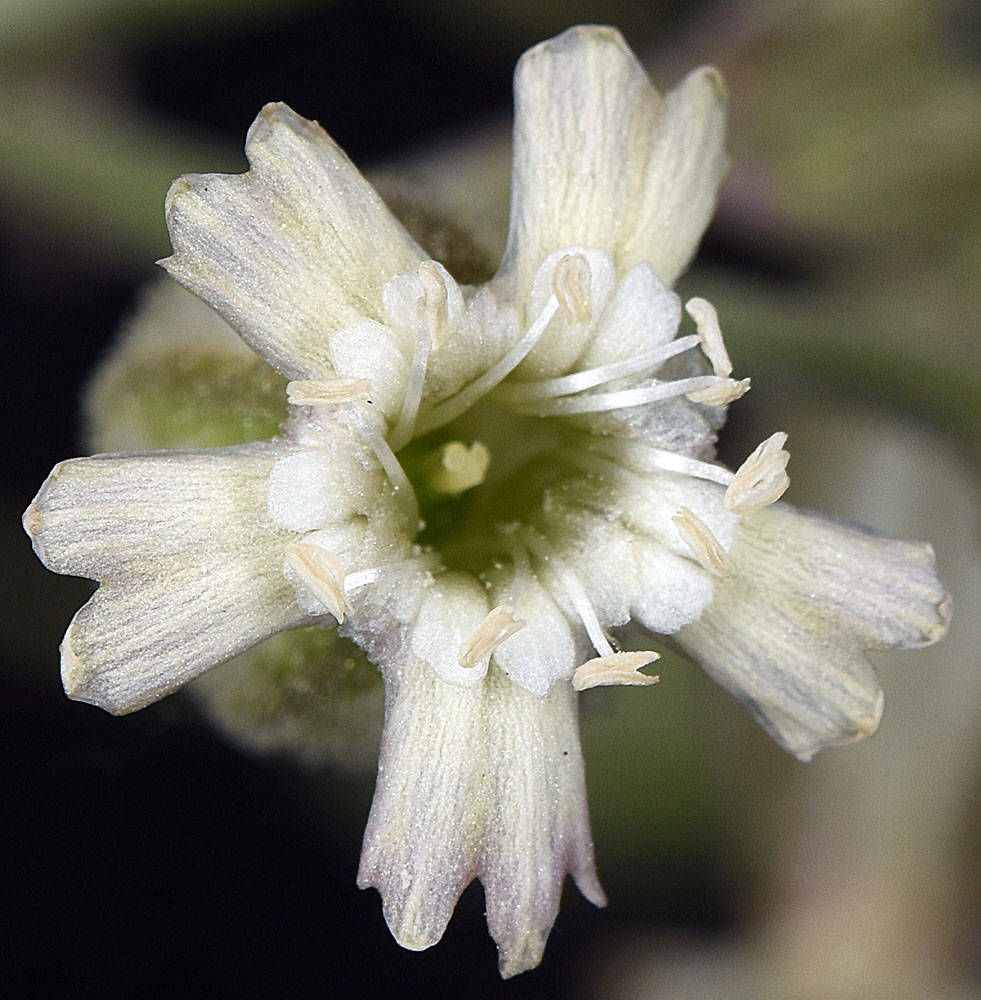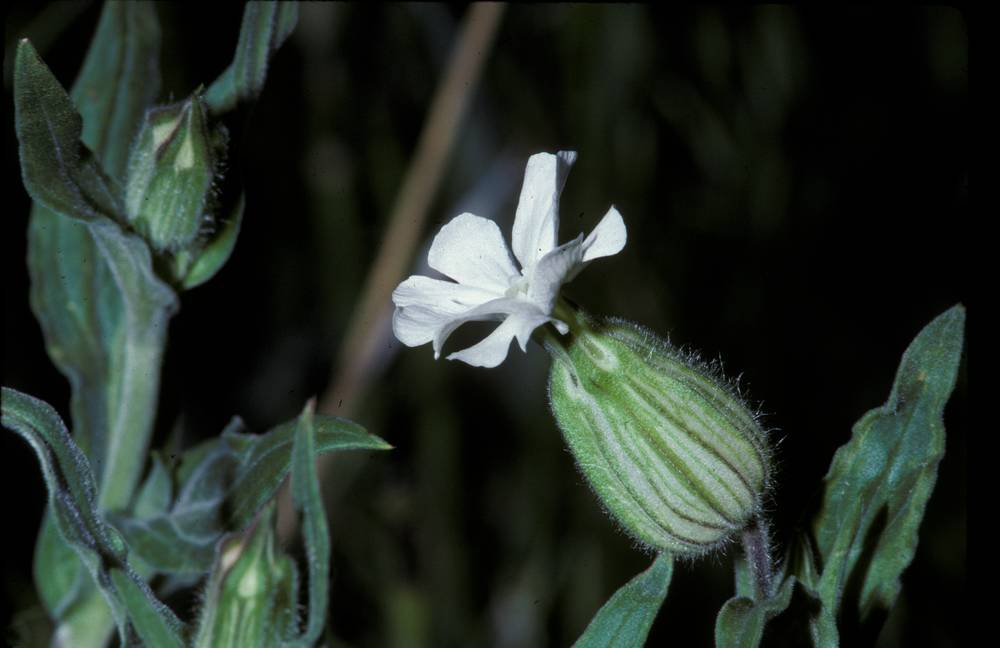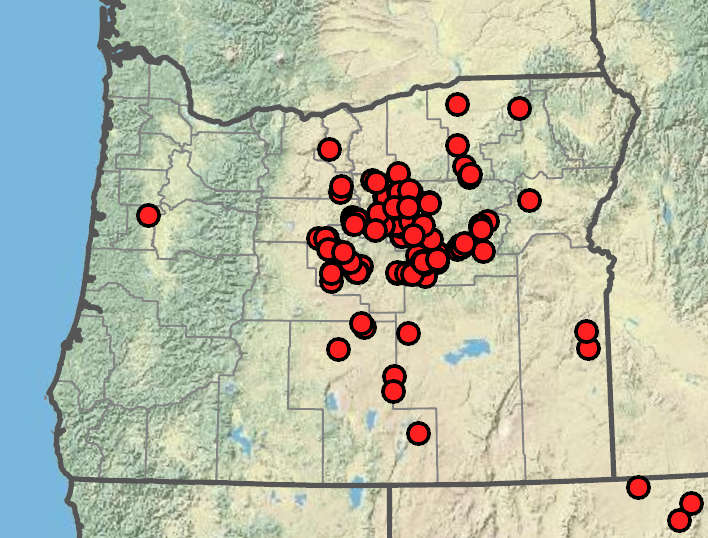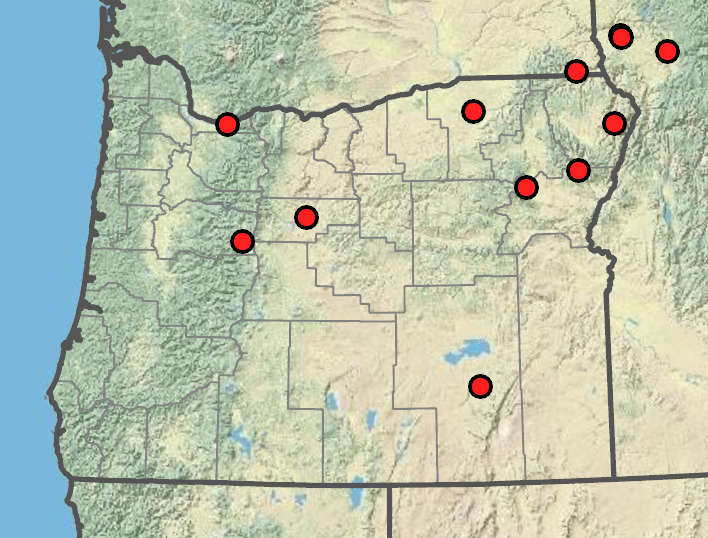Silene scaposa
Silene noctiflora
Robinson's catchfly
night-flowering catchfly
erect, 15–50 cm;
branches few to many, puberulent, glandular-viscid above.
generally erect, 20–60(80) cm, densely hairy, glandular especially above.
basal narrowly oblanceolate, 2–10(20) cm × 2–12(20) mm, densely tufted, not fleshy;
cauline in 1–3 pairs, linear-lanceolate, 1.2–4 cm × 1–4 mm, abruptly reduced upward.
basal elliptic to oblanceolate, 6–12(14) cm × 20–45 mm; upper cauline broadly elliptic to lanceolate, 1–7 cm × 3–12 mm, gradually reduced upward.
terminal and axillary; open cymes, not 1-sided, or flower ssolitary;
pedicels glandular-puberulent.
terminal; open cymes, not 1-sided;
pedicels covered with both short glandular and longer non-glandular hairs.
bisexual; erect;
calyces campanulate, enlarging in fruit, 10–12 mm, glandular-viscid, prominently 10-veined, not netted above; pale commissures present;
veins in lobes thickened and broader apically than commissural veins; commissural veins not forking/fusing with lobe veins;
lobes 1.5–4 mm, with a broad scarious margin;
tips acute to obtuse;
petal claws ciliate below; appendages 2–4;
limbs 2–5 mm; off-white to dingy purple;
lobes 2, 1–2 mm;
stamens slightly exserted;
styles 3–5, equaling petal claws.
bisexual, ascending to erect;
calyces ovate-elliptic, inflated in fruit, 14–22 mm;
hairs mostly glandular, prominently 10-veined;
veins netted above middle of sepal; pale commissures present;
lobes 6–13 mm;
tips acuminate;
petal claws glabrous; appendages 2;
limbs 8–9 mm, white or yellowish white to pinkish;
lobes 2, 4 mm;
stamens included;
styles 3, included.
teeth 3–5;
stalks 1.5–2.5 mm.
ovoid;
teeth 6;
stalks 1–3 mm.
1.2–2 mm, brown, not winged.
1 mm, dark brown to black, not winged.
=48.
=24.
Silene scaposa
Silene noctiflora
Moist hillsides, grassy slopes, coniferous woods. Flowering May–Jul. 700–2100 m. BW, Col, Lava, WV. Native. Endemic to Oregon.
Silene scaposa is defined here as having two petal lobes, with var. lobata (four petal lobes) placed into synonymy of S. nuda.
Open, disturbed areas, fields, lawns. Flowering May–Aug. 0–1400 m. BW, Casc, Col, Lava. CA, ID, WA; throughout North America except far north; Europe. Exotic.
First collected in Oregon from a grain field in 1907, Silene noctiflora appears to be far less common than S. latifolia, with which it is sometimes confused.
Rich Rabeler, Ronald Hartman
Rich Rabeler, Ronald Hartman
- Local floras:
BC,
CA,
OR,
WA
- Local Web sites:
CalFlora,
CalPhotos,
Flora NW,
PNW Herbaria
WildflowerSearch
iNaturalist (observations)
USDA Plants Database
- LBJ Wildflower Center
- SEINet
- Plants of the World Online
- Encyclopedia of Life
- Wikipedia
- Google Image Search





